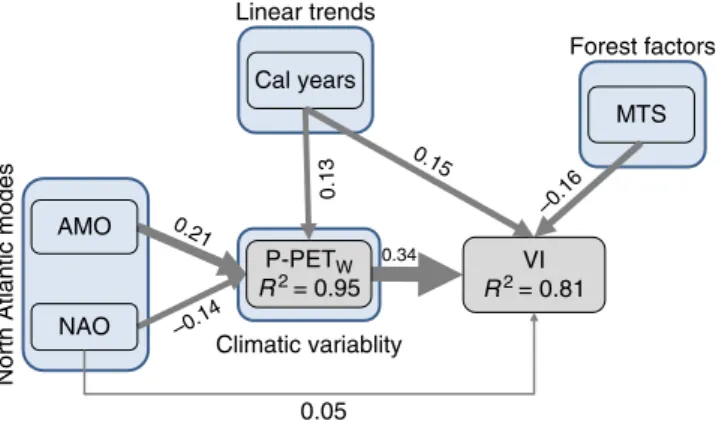Forest productivity in southwestern Europe controlled by coupled North Atlantic and Atlantic Multidecadal Oscillations
Texto completo
Figure


Documento similar
In support of this notion, hyper- thermic Atlantic salmon showed down-regulation of ECM genes (i.e. Col1A1, ON and OCN) and at the juvenile stage had shorter and less
In the previous sections we have shown how astronomical alignments and solar hierophanies – with a common interest in the solstices − were substantiated in the
How do you achieve a book like On the Ocean, a longue durée vision about the interaction between the maritime environment and the Mediterranean and Atlantic
SCAN and EA-WR, and between the summer 9-month SPEI (bottom) and the average 9-month atmospheric circulation indices (right panels). Black
Atlantic Multidecadal Oscillation (AMO); Arctic Oscillation (AO); East Atlantic (EA); El Niño 3.4 SST index (ENSO); Eastern Paci fic (EP); Indian Ocean Dipole (IOD); North
In particular, the growth and decay of the positive phase of the North Atlantic Oscillation, which projects onto the large-scale con figuration fostering clustering over the UK
The aim of the present work is to clarify whether the Pacific SST interannual variability has really changed due to the Atlantic Ocean forcing in the last decades of the
This work aims to contribute to the understanding of the geomorphological evolu- tion of rocky cliffs by means of a case study of a geologically complex cliff (developed on